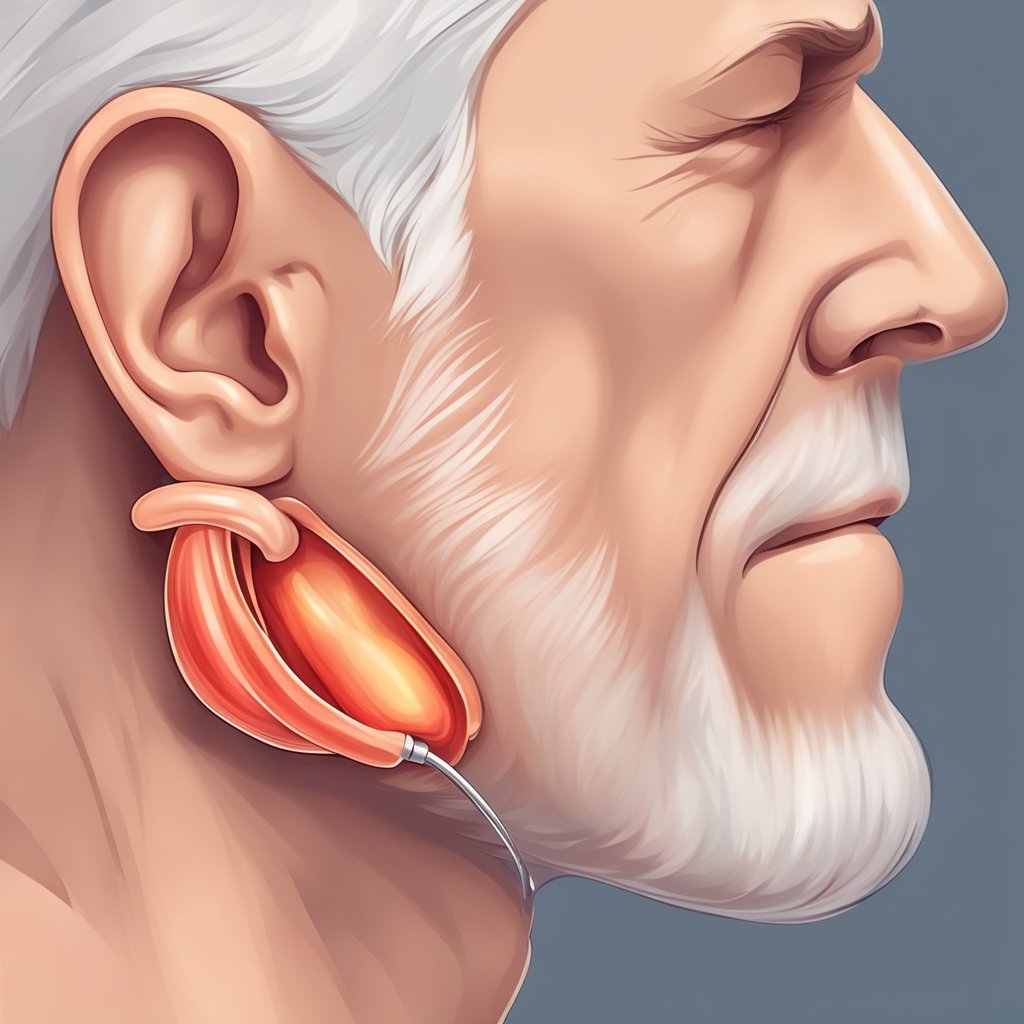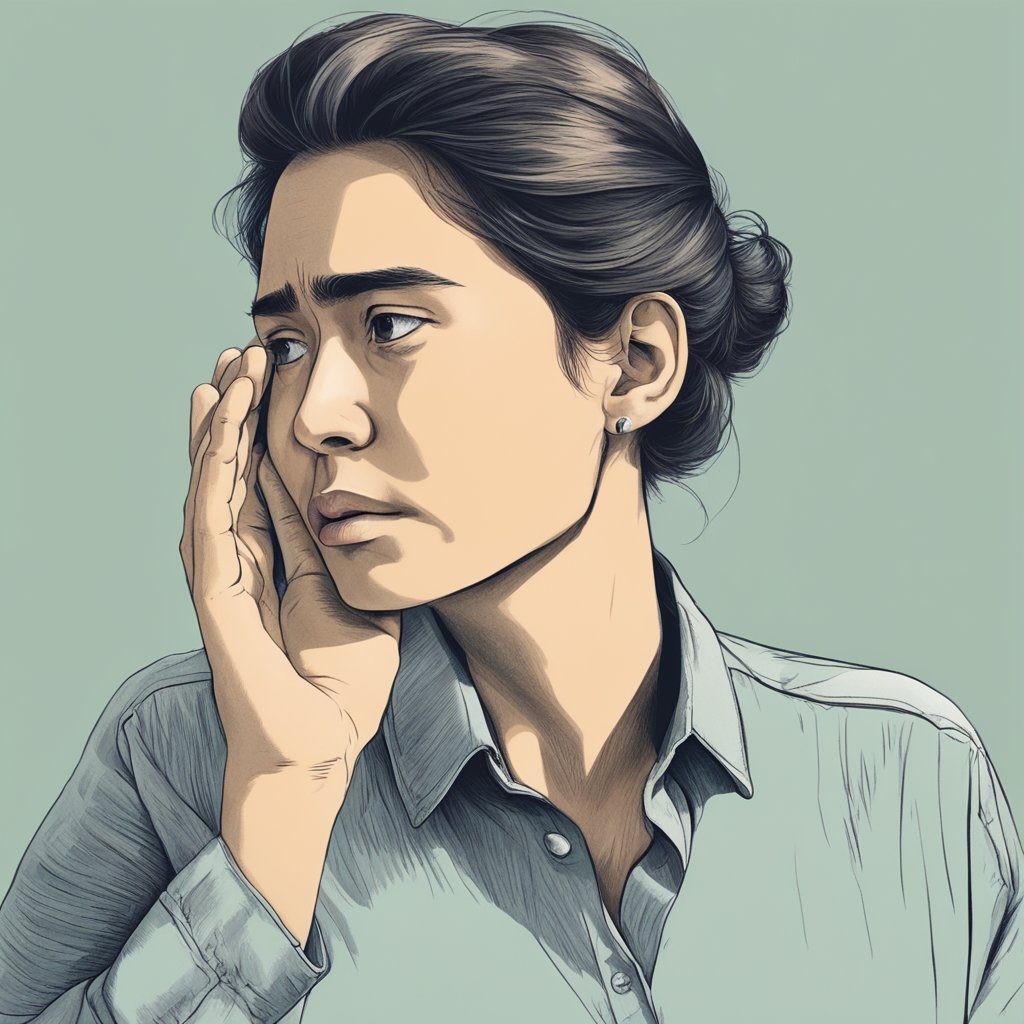Throbbing in the ear can be a disconcerting and uncomfortable sensation. It typically presents as a pulsating pain or a sensation of the ear feeling full or blocked. This occurrence can be sporadic or constant, and its intensity may range from mild to severe. The rhythmic throbbing often aligns with one’s heartbeat, which is referred to as pulsatile tinnitus. Certain movements or positions may exacerbate the throbbing sensation, and in some cases, it may be accompanied by other symptoms such as hearing loss, dizziness, or a ringing sound in the ears.

Various conditions can cause ear throbbing, including ear infections, blockages, abnormal blood vessel structures, or trauma to the ear. It is a common symptom that many people experience at some point, drawing attention to the delicate balance of structures within the ear and the interconnected nature of our circulatory and auditory systems. Knowing when to manage the condition at home and when to seek medical advice is important. If ear throbbing persists or is severe, it could indicate an underlying issue that requires professional attention.
Key Takeaways
- Throbbing in the ears can be due to a variety of reasons, from infections to circulatory issues.
- Symptoms accompanying ear throbbing, like hearing loss or dizziness, should be monitored closely.
- Persistent or severe ear throbbing warrants consultation with a healthcare professional.
Understanding Ear Throbbing

Experiencing ear throbbing can be unsettling. I’ll explain the basic ear structure and delineate common reasons for this sensation below.
Anatomy of the Ear
The ear comprises three main sections: the outer ear, the middle ear, and the inner ear. Throbbing in the ear often originates from the middle or inner ear, where blood flow can be affected. Both areas contain blood vessels that can produce a rhythmic pulsing sensation when they’re dilated or if blood pressure is elevated.
- Outer Ear: Includes the ear canal and eardrum.
- Middle Ear: Air-filled space containing the ossicles; small bones that transmit sound vibrations.
- Inner Ear: Contains the cochlea and vestibular system, crucial for hearing and balance.
Common Causes of Throbbing
Throbbing in the ear, often described as a pulsing sensation that’s in sync with one’s heartbeat, may be due to several factors:
-
Tinnitus: A common condition characterized by a ringing or buzzing in the ears.
- Pulsatile tinnitus is a specific type, where thumping, pulsing, or throbbing sounds are heard, potentially due to altered blood flow.
-
Blood Flow Issues: Changes in the blood vessels near the ear, such as those caused by strenuous exercise or hypertension, can result in ear throbbing.
-
Arteries and Veins: Abnormalities in arteries or veins in the ear or neck can lead to a rhythmical throbbing, audible in the ear.
Here’s a succinct list to encapsulate the vascular-associated reasons for ear throbbing:
- Increased blood pressure.
- Turbulent blood flow due to narrowed or kinked blood vessels.
- High-intensity workouts causing temporary increased blood flow.
- Stress or anxiety leading to heightened cardiovascular responses.
- Vascular tumors in the head or neck, though rare, might also be responsible.
My intent is to elucidate the factors contributing to the phenomenon of ear throbbing with emphasis on the physical anatomy and common vascular causes.
Identifying Symptoms and Related Conditions
In reviewing my ear throbbing, I focus on the specific symptoms and explore related health conditions to understand the potential causes.
Symptoms of Ear Throbbing
- Intensity and Duration: The throbbing in my ear ranges from a mild, persistent pulsing to a more distressing pounding sensation that may last from a few minutes to several hours.
- Associated Symptoms: Alongside the throbbing, I notice additional symptoms such as:
- Ringing: A noticeable ringing or buzzing sound (tinnitus)
- Hearing Changes: Subtle or significant changes in my hearing ability
- Discomfort: Varied levels of pain within my ear
Related Medical Conditions
My ear throbbing can be a sign of underlying health concerns. Some related medical conditions include:
- Hypertension (High Blood Pressure): This condition, characterized by the force of the blood against artery walls being too high, often leads to pulsatile tinnitus which corresponds with the heartbeat.
- Arteriosclerosis: Stiffening or hardening of the artery walls may affect normal blood flow and cause a thumping or throbbing sensation in my ear.
- Anemia: Lower than normal levels of red blood cells can lead to fatigue and in some cases contribute to a thumping sensation in the ears.
- Otologic Issues: Conditions directly relating to ear health, such as infections or Eustachian tube dysfunction, could lead to throbbing sensations.
In relation to these conditions, symptoms such as dizziness and headaches may arise, further pointing to the necessity for a medical evaluation to determine the exact cause of my ear throbbing.
Diagnostic Processes
When I experience a throbbing ear, it’s crucial to undergo an accurate assessment to determine the underlying cause. A thorough diagnostic process includes both physical examinations as well as a variety of tests.
Examinations and Hearing Tests
During the initial examination, I often check for signs of infection or inflammation. If my patient complains about a ringing sensation or hearing issues, which might indicate tinnitus, I conduct hearing tests. These may include:
- Pure-tone audiometry: This test assesses the ability to hear sounds at different pitches and volumes.
- Tympanometry: It evaluates the functioning of the middle ear.
- Speech reception threshold (SRT): This determines the faintest speech that can be heard half the time.
Imaging and Blood Tests
If the physical exam and hearing tests don’t pinpoint the reason for ear throbbing, I move to imaging techniques. These can include:
- MRI (Magnetic Resonance Imaging): Provides detailed images of the ear’s internal structures to rule out tumors or nerve damage.
- CT Scan (Computed Tomography): Offers cross-sectional images to detect any physical abnormalities.
- Angiography: This imaging test is useful if a vascular issue is suspected.
To support these findings or to check for infections and other conditions that could cause symptoms, I might also order blood tests. These tests can identify markers of inflammation, infection, or other underlying health issues.
Treatment Options and Management
When my ear throbs, I consider both medical interventions and home-based remedies to manage and treat the condition.
Medical Treatments
If I suspect that the throbbing in my ear is due to an underlying infection or condition, I would first seek medical advice for an accurate diagnosis. Typically, medications like antibiotics or antifungals are prescribed if there’s an infection. In cases where the throbbing is associated with tinnitus, treatment options may include sound therapy or tinnitus retraining therapy. These therapies aim to help me cope with the noise associated with tinnitus. For situations where the throbbing is a symptom of high blood pressure, my healthcare provider might recommend blood pressure medication.
| Medical Treatment | Purpose | Notes |
|---|---|---|
| Antibiotics/Antifungals | Treat infection | If infection is confirmed. |
| Sound Therapy | Manage tinnitus | Can be combined with retraining therapy. |
| Tinnitus Retraining Therapy | Cope with tinnitus | Involves counseling and sound masking. |
Lifestyle Adjustments and Home Remedies
Making lifestyle changes is often an effective way for me to address the throbbing in my ear, especially if it’s related to stress or poor diet. Simple things like getting adequate rest, managing stress, and avoiding loud noises can make a significant difference. For immediate relief, I sometimes find it helpful to apply a warm compress to the affected ear. In instances where earwax buildup is the culprit, an earwax removal process by a professional is necessary. It’s worth noting that I always avoid inserting anything into my ear canal to prevent further damage.
- Focus on healthy sleep patterns
- Manage stress through relaxation techniques
- Protect ears from excessive noise exposure
By carefully considering both medical and home-based treatments, I actively manage ear throbbing with a comprehensive approach.
When to See a Specialist
If I experience a throbbing sensation in my ear, it’s crucial for me to determine when professional help is necessary. Throbbing can be benign but sometimes may indicate an underlying condition that requires a specialist’s attention.
Persistent Symptoms: If my ear throbbing persists for more than a week or is recurrent, it’s time for me to consult an expert.
Significant Discomfort or Pain: Should the throbbing be accompanied by pain that disrupts my daily activities, a specialist can help diagnose the cause and provide treatment options.
Otolaryngologist Consultation: An otolaryngologist, also known as an ENT (ear, nose, and throat) doctor, is the specialist I should see. They are equipped to diagnose and manage disorders related to the ear.
- Pulsatile Tinnitus: If I perceive a rhythmic throb that aligns with my heartbeat, it might be pulsatile tinnitus. It’s important for me to inform the specialist, as this may require specific evaluation.
Associated Symptoms: The presence of other symptoms, such as hearing loss, dizziness, or the impression that my ear is full, should prompt me to make an appointment with an otolaryngologist.
-
Possible Underlying Causes:
Condition Description Head and Neck Tumors Uncommon but serious, tumors can press on blood vessels or nerves, causing throbbing in the ear. Arteriovenous Malformation An abnormal connection between arteries and veins that might result in pulsatile sensations.
If I notice any of these conditions or symptoms, it’s in my best interest to see a specialist promptly to rule out or treat any serious issues. It’s better to err on the side of caution when it comes to the health of my hearing and overall well-being.
Frequently Asked Questions
In this section, I will address common concerns regarding pulsating sensations in the ear, providing insights into the causes, relief measures, treatment options, and indicators for when to seek medical advice.
What are common causes for pulsating sensations in the ear?
Pulsating sensations, also known as pulsatile tinnitus, can arise from various sources such as high blood pressure, ear infections, or vascular anomalies near the ear. These sensations usually match the rhythm of my heartbeat.
How can I alleviate a throbbing sensation in my ear?
To alleviate a throbbing sensation in the ear, I often find that managing stress, reducing salt intake, and avoiding exposure to loud noises can be effective. Over-the-counter pain relievers may also provide temporary relief.
What treatment options are available for pulsatile tinnitus?
Treatment options for pulsatile tinnitus may include addressing the underlying cause, such as regulating blood pressure or undergoing surgery for vascular abnormalities. In some cases, sound therapy or cognitive behavioral therapy can also be beneficial.
How can I reduce the thumping noise I hear in my ear?
Reducing the thumping noise in my ear often involves practicing relaxation techniques to lessen tension, as stress can exacerbate these symptoms. Using white noise machines to mask the internal sounds can also prove helpful.
Is it normal to hear your heartbeat in your ear while lying down?
It is relatively common to hear my heartbeat in my ear while lying down, especially if I lay on one side. If it becomes persistent or is accompanied by other symptoms, it may warrant further investigation.
When should one be concerned about a whooshing or pulsing sound in the ear?
I should be concerned about a whooshing or pulsing sound in my ear if it persists, occurs only in one ear, or is associated with hearing loss, dizziness, or other unusual symptoms. Consulting a healthcare provider is advisable to rule out serious conditions.